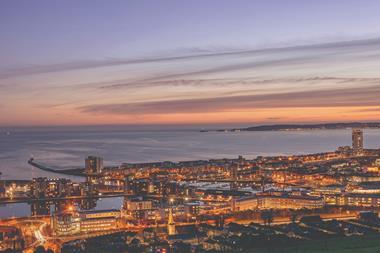Climate change has arrived. These are not my words, and they were not triggered by this week’s stifling heatwave. They were the opening sentence of a report handed to ministers in June a year ago.

The report, titled ‘Independent Assessment of UK Climate Risk’, was compiled by the Climate Change Committee (CCC), a statutory body set up under the Climate Change Act to give independent advice to government. The report warned of dire things to come and for once the old Danish aphorism – that it’s risky to make predictions, especially about the future – didn’t apply. Barely a month later, the UK was hit by severe floods.
On Sunday 25 July, parts of London saw a month’s rainfall dumped from the clouds in under an hour.
Tube stations and hospitals were flooded, with Whipps Cross Hospital forced to divert ambulances and evacuate about 100 patients when the deluge led to power failures.
I saw the impact first hand. The drain outside my home became a fountain, its heavy iron cover tossed aside by the force of water. Then the flood found our cellar, and only buckets and a frantically sourced bilge pump kept more severe damage at bay. At its height, four feet of water lapped at our electricity meter and fuse box.
It could have been worse. Estimates at the time suggested £100m of damage was done by the July storms in the UK alone.
This July, of course, we have seen a different extreme, with record-breaking heat pummelling the whole country.
Together, both the floods and heatwave underscore how badly our homes, transport infrastructure and critical facilities such as hospitals cope with the extreme weather events we now face.
Returning to last year’s CCC report, it noted the urgency of the situation, stating: “The gap between the level of risk we face and the level of adaptation under way has widened. Adaptation action has failed to keep pace with the worsening reality of climate risk.”
The committee identified more than 60 types of climate risk faced by the UK, but drew out eight as the most urgent – those it said required direct government policy action within two years, “to avoid locking in poor planning”. One was the risk to human health and economic productivity posed by buildings that are unable to deal with heatwaves.
A year has passed since the report landed, and it’s hard to feel that its warnings have been properly heeded. For example, witnesses giving evidence to MPs on the Levelling-up and Regeneration Bill this week criticised the draft law for effectively ignoring the issue, with one planning expert concluding: “The bill is as good as silent on the climate emergency.”
As the events of this week remind us, we cannot rely on the government for leadership in this area. And it is not sufficient to draw up plans to reach net zero by some handy date in the future, essential as this may be.
Climate change has arrived. Existing buildings will increasingly require retrofitting to deal with wider extremes of heat, cold and precipitation. Buildings on the drawing board must be built with rising threats in mind.
Forecasts may be risky, especially about the future. But we can, unfortunately, be sure that worse is yet to come.




























No comments yet